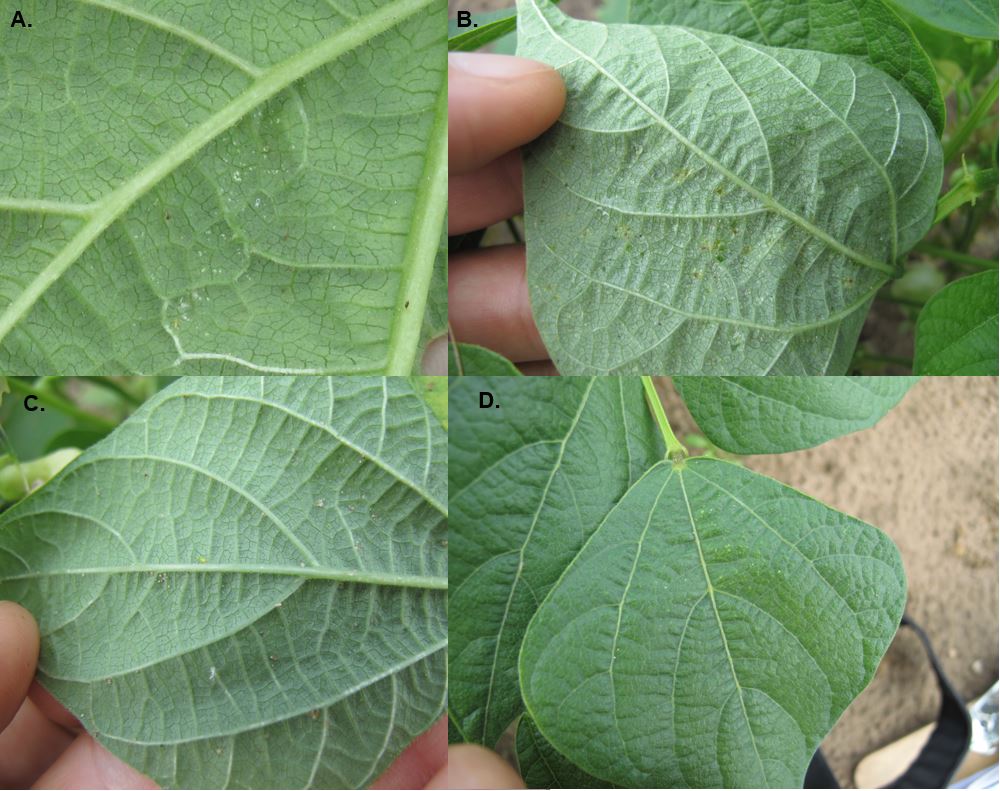Hot, dry weather increases risk of spider mites and thrips in field-grown vegetables
Thrips and spider mites are common pest problems in many vegetable crops in Michigan. Find out more about their biology and management in the field.

Thrips (Photos 1-2) and spider mites (Photo 6, bottom of article) are commonly occurring pests of numerous vegetables, and their populations can suddenly increase in the field, referred to as a “flare up.” Both of these arthropods feed on a variety of plants and they are not picky when it comes to vegetables. They can be problematic, especially in crops where they feed on reproductive plant parts or if their numbers get so high the entire plant becomes stressed.
The two pests are so small (1-2 millimeters) that they are difficult to see for the untrained eye. Thrips are visible mostly because they move around the leaves quickly and the eye catches their movement, while spider mites are easily spotted due to the webs they build.
Their feeding damage on leaves can superficially look similar, with tan-brown spots/mottling on the surface of the leaves, indicating areas where plant cells die. The difference is thrips do not build webs, but if spider mites are present, webbing is noticeable, especially on the underside of leaves where the leaf and stem meets (Photo 6).
Thrips and spider mites are able to quickly reproduce or flare up, which leads to difficulties in their management. Flare ups are a result of multiple factors: (1) hot, dry weather, (2) the repeated use of broad spectrum insecticides that kill biological control agents, and (3) insecticide resistance of these two pests to many commonly used broad spectrum insecticides. During cooler, wetter periods, their populations will naturally decline, sometimes quite drastically, so proper scouting is important. For scouting tips, see Michigan State University Extension’s “Learn how to scout for onion thrips in onions.”
The key to an effective management program is to preserve biological control agents that are already in the field. Early in the season, their populations are low and by refraining from spraying broad spectrum insecticides, you can allow the natural enemies to reproduce and build up to levels where you can effectively control pests. Instead of broad spectrum insecticides, use more selective insecticides/miticides that allow natural enemies to thrive—see the table below for more information on this.
|
Examples of pesticide active ingredients for thrips and spider mite management. |
||
|
Active ingredient |
Thrips |
Spider mites |
|
abamectin |
+ |
+ |
|
spiromesifen |
- |
+ |
|
spinetoram |
+++ |
- |
|
spirotetramat |
++ (larvae only) |
+ (suppression only) |
|
spinosad* |
+ |
- |
|
cyantraniliprole |
+ (suppression only) |
- |
|
neonicotinoid |
- |
- |
|
pyrethroid |
- |
- |
|
carbamate |
- |
- |
* listed by the Organic Materials Review Institute (OMRI).
NOTE: For other pesticide options, common names of pesticides and specific products registered on crops, please visit the Midwest Vegetable Production Guide and the Resource Guide for Organic Insect and Disease Management.
A good management program should begin early in the season to prevent flare up from occurring. Biocontrol agents can be purchased from vendors online for both of these pests, but these are typically recommended for greenhouse use only, because in the field they are not effective. Instead, in the field growers can rely on naturally occurring biological control agents such as predatory thrips (Photos 1, 3) and mites, big eyed bugs, lacewing larvae (Photo 5), lady beetles and minute pirate bugs (Photo 4). These are predatory arthropods that hunt by searching the leaves for prey and can kill multiple prey items in a day.
To preserve and help them, in addition to using selective insecticides, plant flowers in and around fields that provide them with shelter and nectar/pollen. For more information on flower borders, see “Smart flower borders to attract beneficial insects” from MSU Extension.
Key points for thrips and spider mite management in the field:
- Dry, hot weather causes flare ups, while cool, wet conditions naturally suppress thrips and spider mite populations.
- Start thinking early in the season about preserving your natural enemy populations.
- Know your pesticides: selective pesticides preserve natural enemies of pests.
- Adding flowers to a field can provide natural enemies with shelter and additional food
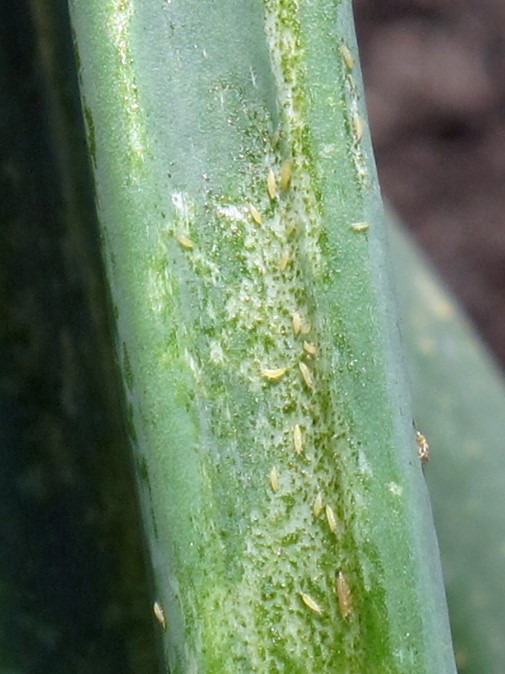
Photo 2. Onion leaf showing scars due to thrips feeding and onion thrips larvae (1-2 millimeters).
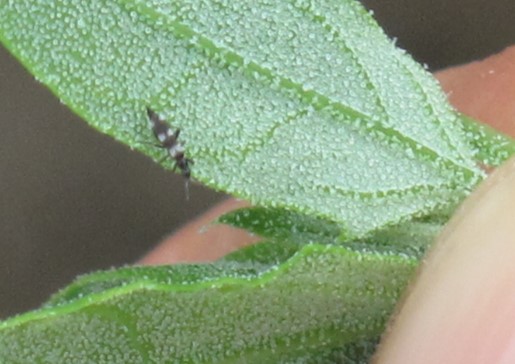
Photo 3. Predatory thrips have a black and white pattern on their backs and are great predators of pest thrips. Their populations are slow to build up, and can be wiped out with broad spectrum insecticide applications.
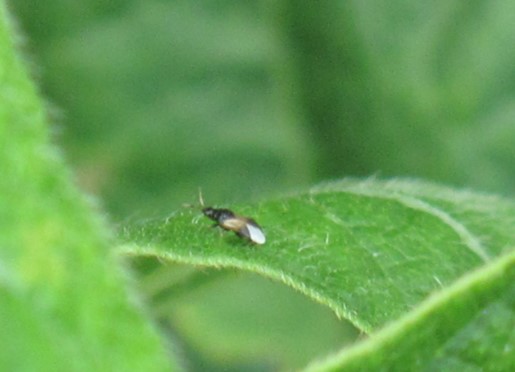
Photo 4. Minute pirate bugs (2 millimeters) are excellent predators of many small pests such as thrips and leafhoppers.
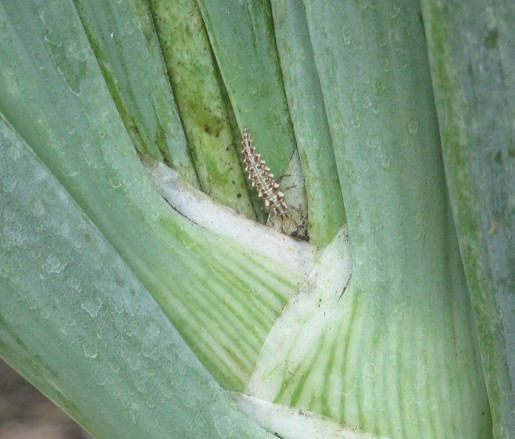
Photo 5. Lacewing larva looking for thrips on an onion. These predatory insects hunt for a variety of prey.
Photo 6. Green bean leaf with spider mites. Spider mites can be easily noticed by turning over leaves and looking for webbing on the underside. On closer inspection, mites become visible (less than 1 millimeter) as they move around the web. Webs often catch dirt particles, which makes them easier to see (A-C). Yellow/tan mottling on the leaf surface indicates mite feeding (D).



 Print
Print Email
Email